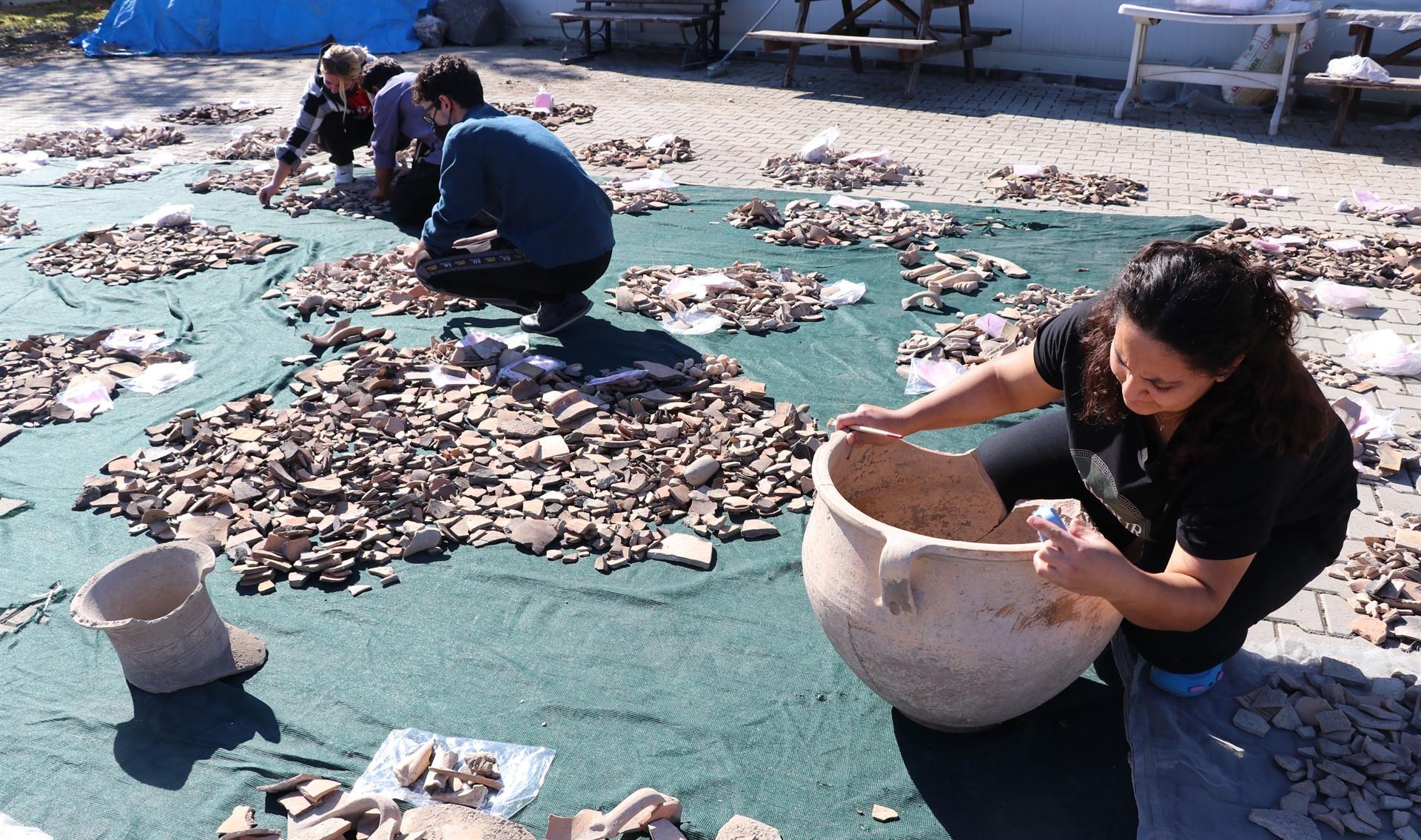Iron Age structures unearthed at Tatarlı Mound
ADANA

In excavations at Tatarlı Höyük, which served as an uninterrupted settlement in the southern province of Adana from the Neolithic Age to the Early Roman period, an area used for the storage of food in the Middle Iron Age has been unearthed.
The Hittite Queen Puduhepa was born and spent her youth in the mound, located in the Tatarlı neighborhood of the Ceyhan district. The 15th season excavations aim to reach the findings, which are proving that the area is Lawazantiya, one of the most important cities of the Kizzuwatna State.
Speaking to the state-run Anadolu Agency, Çukurova University (ÇU) Faculty of Arts and Sciences, archeology department member and head of the excavation committee, Associate Professor Serdar Girginer stated that Tatarlı, which was inhabited from the Pre-Pottery Neolithic Age to Early Rome, was a “mega” city in the Hittite period in the second millennium B.C., and explained the importance of every artifact to be found there in terms of illuminating the history of Çukurova.
Girginer reminded that during the excavations carried out by 16 workers in three trenches, they unearthed a garbage pit used in the Middle Bronze Age 4,000 years ago.
Girginer stated that they unearthed new finds that will shed light on history and that they finally found a storage area in the region.
“We found various storage vessels from the Middle Iron Age site. We took them to the excavation house. These pots are filled with soil. With our botanist team members, we’ll find carbonized grain residues inside. Measuring cups came out of the large pots, but experts will tell if it contains lentils, barley or wheat,” he said.
“Apart from that, we fund a cattle skeleton from the Hellenistic period. This skeleton was not buried in a special pit. If it had been buried in a special pit, we might think that it was a dedication to the gods of the Hellenistic period. Cattle has always been an animal, cut and eaten by rich-class people. It is a water-loving animal, so this is a very wet area. One can also comment on the dead food, but this skeleton most likely died where it was. Our zoo archaeologists will give a lot of details about it,” he said.
Girginer stated that this season they will also be working on a trench related to the Chalcolithic Age.
“Let’s see what surprises Tatarlı Höyük has. I guess this mound rewrites the history of Adana, as we examine the settlement patterns, characters and everything that people have done, starting from the earliest non-pottery period of the Neolithic era to the Early Rome, with the excavations at Tatarlı Höyük,” he added.
Girginer said that the mound, which is the oldest settlement in Çukurova, is on the way to turn into an open-air museum with the remains that have not been unearthed yet.
















